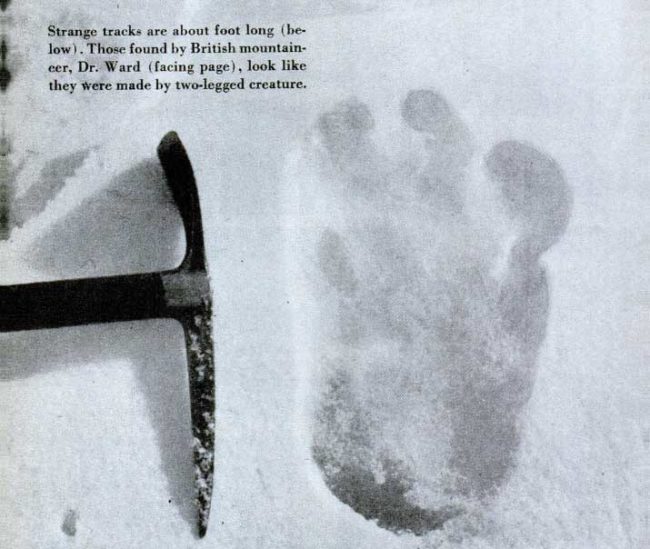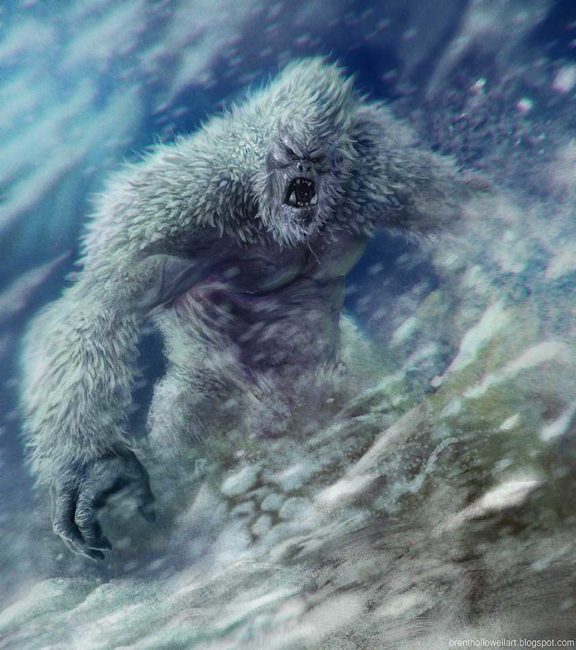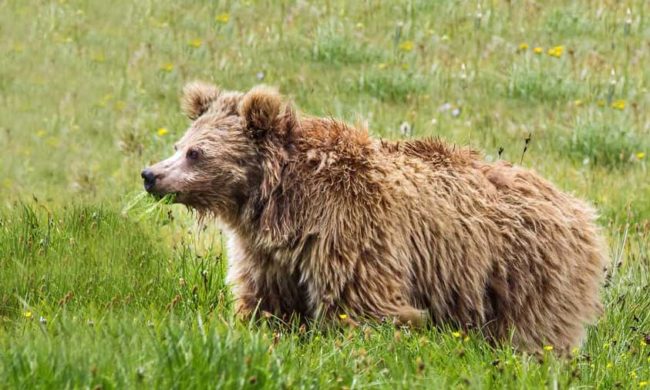 The term Yeti is a familiar one to most people. It describes the ape-like creature that supposedly dwells in the snow peaked Himalayas. For most this is simply a popular cultural myth, but some true believers do exist.
The term Yeti is a familiar one to most people. It describes the ape-like creature that supposedly dwells in the snow peaked Himalayas. For most this is simply a popular cultural myth, but some true believers do exist.
Just to be clear …
- Quantity of actual scientific evidence that the Yeti is or was real = exactly zero
- Number of reported sightings and associated stories = lots
The “Abominable Snowman”
This is an alternative popularised name, and was coined in 1921 via Lieutenant-Colonel Charles Howard-Bury. Within his book that describes his 1921 expedition, “Mount Everest The Reconnaissance, 1921″, he describes coming across some footprints in the snow. He thought that they looks like wolf prints, but his Sherpa guides suggested that they had been made by “The Wild Man of the Snows”.
The precise term pops up in a news story that had been sourced by a reporter in Calcutta who interviewed some of the porters on the Everest Reconnaissance expedition. The reporter apparently used a bit of journalistic hype and so deployed the term “Abominable Snowman” instead of “The Wild Man of the Snows”.
A New Scientific Study has just been published
Generally, anybody caught doing a scientific study into the Yeti would potentially find such a move to be a career killer because it would probably be regarded as crackpottery. This however is not crackpottery, it is quite serious.
Published within the Royal Scciety Proceedings B (the Royal Society’s flagship biological research journal that publishes original articles and reviews of outstanding scientific importance and broad general interest), we have the following dated 29th Nov …
Evolutionary history of enigmatic bears in the Tibetan Plateau–Himalaya region and the identity of the yeti
Although anecdotally associated with local bears (Ursus arctos and U. thibetanus), the exact identity of ‘hominid’-like creatures important to folklore and mythology in the Tibetan Plateau–Himalaya region is still surrounded by mystery. Recently, two purported yeti samples from the Himalayas showed genetic affinity with an ancient polar bear, suggesting they may be from previously unrecognized, possibly hybrid, bear species, but this preliminary finding has been under question.
OK, so exactly what did they actually do?
We conducted a comprehensive genetic survey of field-collected and museum specimens to explore their identity and ultimately infer the evolutionary history of bears in the region.
What did the discover?
Yes, its a bear, or as they put it …
This study represents the most rigorous analysis to date of samples suspected to derive from anomalous or mythical ‘hominid’-like creatures, strongly suggesting that the biological basis of the yeti legend is local brown and black bears.
In summary
After doing a deep DNA analysis of supposed Yeti artefacts gathered up from private collections and museums around the world, including the infamous monastic relic that is claimed to be a Yeti paw, they found that all they had were the remains of about 23 different bears.
They also discovered insights into the evolutionary history of bears in the region …
“Brown bears roaming the high altitudes of the Tibetan Plateau, and brown bears in the western Himalayan mountains, appear to belong to two separate populations,”
“The split occurred about 650,000 years ago, during a period of glaciation.”
The two sub-species have probably remained isolated from one another ever since despite their relative proximity, she speculated.
To put all that another way for those that still believe …
… this guy …
.. is in fact actually really this guy …
The emergence of the myth is perhaps understandable. If you were up alone in the mountains and spotted a bear on the distance, then you would most probably dig into your cultural heritage for an interpretation of what you had just seen, and naturally leap to the “Yeti” conclusion. We are also story tellers, and we all love a good mystery.
One thing is perhaps inevitable, the myth itself will persist and thrive, even when there is clear evidence like this. This is perhaps because the myth is simply too emotionally compelling to abandon.
Author Quotes
“Our findings strongly suggest that the biological underpinnings of the Yeti legend can be found in local bears,” – lead scientist Charlotte Lindqvist, associate professor at the University of Buffalo College of Arts and Sciences.


